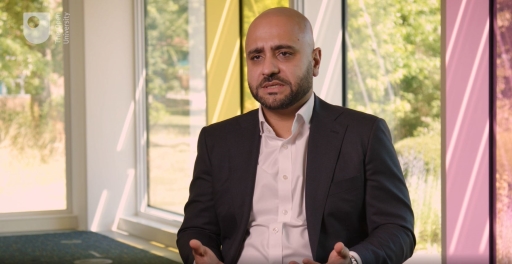4 Feeling fearful
Fear can be another barrier to effective implementation of diversity and inclusion within the workplace. This could be:
- the fear of an individual who has faced discrimination and their subsequent reluctance to engage with the agenda or speak out, or
- the fear of getting things wrong due to privilege or unconscious bias.
In this short film, Asif Sadiq explains that making mistakes is natural, and why we shouldn’t let that stop us from trying.

Transcript: Video 5: Making mistakes
To highlight workplace diversity issues and fear, employee engagement consultancy Scarlett Abbott (no date) refers to the SCARF model (Rock, 2008), which looks at five domains of human social experience. Their report provides useful examples of how individuals from minority or majority groups might feel as a result of each of these five factors.
| Minority | I have to hide who I really am for fear of discrimination. |
| Majority | Programmes accelerating career progression for women or people of colour might mean I miss out on a promotion I deserve. |
| Minority | I can’t work with that team. I never know what they are going to say to me. |
| Majority | It’s just banter, I didn’t know you were going to be offended by that. |
| Minority | I was the best qualified candidate, but they didn’t give me the job… again. |
| Majority | Why do they keep making us do these diversity courses? |
| Minority | I’m not going to challenge that comment. That person could make things difficult for me if I make a fuss. |
| Majority | I don’t trust him. You just need to look at the papers to see why people are worried around him. |
| Minority | How dare they treat me like that? I am furious. |
| Majority | Why am I in trouble? I don’t even know what I did to upset them. |
Reducing the sense of threat triggered by each of these factors can support diversity and inclusion initiatives that might otherwise be treated with caution by those you wish to engage. Scarlett Abbott’s paper discusses recommendations for reducing each threat and concludes with advice for moving forward and engaging the majority.
- Share evidence of the business benefits and positive outcomes for everyone when a business gets diversity and inclusion right
- Provide a platform and safe space in which people can educate themselves about how to behave more inclusively
- Expand the conversation to a more three-dimensional view of diversity to enable people to see what they have in common with others, rather than what makes them different
- Challenge stereotypes, call out negative behaviours and share stories that bust myths and preconceptions
- Encourage role models to share stories of their experience to generate empathy and change perceptions.
